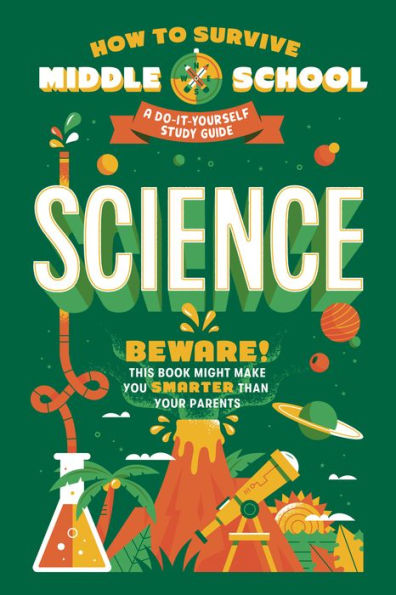Table of Contents
Introduction: A Journey into Science 01
Chapter 1 Earth's Place in the Universe 11
1 The Solar System 12
2 Writing Very, Very Big Numbers: Scientific Notation 15
3 Getting Streetewise: Exploring the Solar System 17
4 Building a Model of the Solar System 20
5 The Force: Gravity at Work 22
6 The Earth-Moon-Sun System 24
Chapter 2 The History of Planet Earth 47
1 A Stroll Through the Earth's Past 48
2 The Geologic Time Scale 50
3 Using Major Events to Understand Earth's History 58
4 The Lives of Rocks 63
5 The Rock Cycle 65
Chapter 3 The Forces that Shape the Earth 79
1 The Slow and Steady Earth 80
2 Earth's Dramatic Side 84
3 Once Upon a Time on Our Planet Pangaea 87
4 Continents on the Move 96
5 Plate Tectonics 101
Chapter 4 Water, Weather, and Climate 109
1 The Water Cycle 110
2 Movement of Water in the Atmosphere 122
3 What's Land Got to Do with It? 131
4 Staying Current with the Currents 133
5 Weather Versus Climate 139
Chapter 5 Earth and Human Activity 149
1 The Spheres of Earth 150
2 Water Cycles Around Again 155
3 The Carbon Merry-Go-Round 157
4 Human Impacts on Earth Systems 164
5 The Changing Climate 169
6 Is Human Activity Causing Global Warming? 176
7 Natural Causes of Climate Change 181
8 What Can We Do About It? 184
Chapter 6 From Cells to Organisms: Structures and Processes 197
1 Exploring the Lives of Cells 198
2 Cellular Reproduction 218
3 The Body's Systems 227
Chapter 7 Ecosystems: Interactions, Energy, and Dynamics 245
1 What Is an Ecosystem? 246
2 Population-Limiting Factors 250
3 The Cycles of Energy and Matter 254
4 Balancing Biodiversity 261
Chapter 8 Heredity: Inheritance and Variation of Traits 277
1 A Journey into the Forest of Heredity 278
2 Dominant and Recessive Traits 286
3 It's All About the Genes 292
4 Inheritance of Traits Over Generations 301
5 Mutations 304
Chapter 9 Biological Evolution: Unity and Diversity 315
1 Evolutionary Detectives: The Fossil Record 316
2 Embryological Development 321
3 Natural Selection 324
4 Natural Selection in Action 329
5 Mutations and Adaptations 333
Chapter 10 Matter and its Interactions 347
1 Exploring Reactions 348
2 Atoms 356
3 The Periodic Table 364
4 Valence Electrons 373
5 Bonds Between Atoms 376
Chapter 11 Motion and Stability: Forces and Interactions 391
1 Speed, Velocity, and Acceleration 392
2 Balanced and Unbalanced Systems 407
3 Laws of Motion 412
Chapter 12 Energy 423
1 What is Energy? 424
2 Potential and Kinetic Energy 426
3 Conservation of Energy 434
4 Energy All Around Us 439
Chapter 13 Waves, Energy, and Information 451
1 The Waves of Sights and Sounds 452
2 Movement of Mechanical Waves 466
3 Signals 473
Chapter 14 How to Think Like a Scientist 489
1 Science as a Way of Understanding the World 490
2 What Kind of Scientist Are You? 506
3 Science and Society: The Never-Ending Loop 511
4 What's Next 513
Text Credits 515



